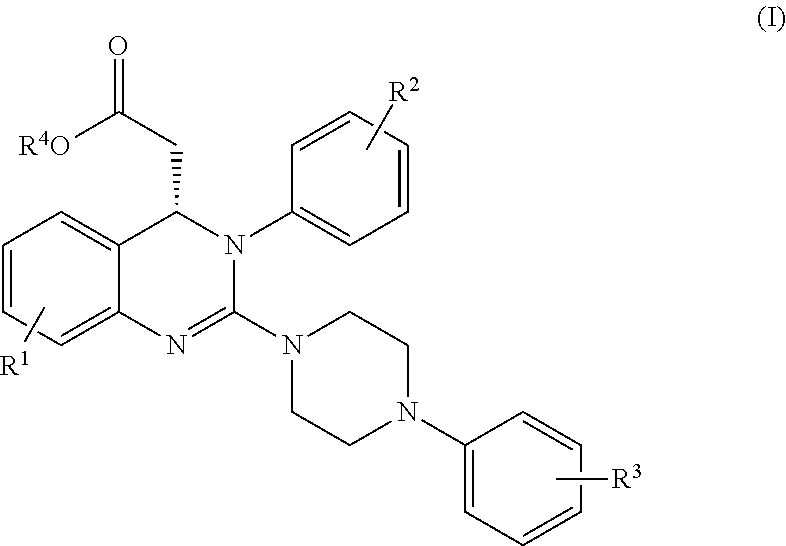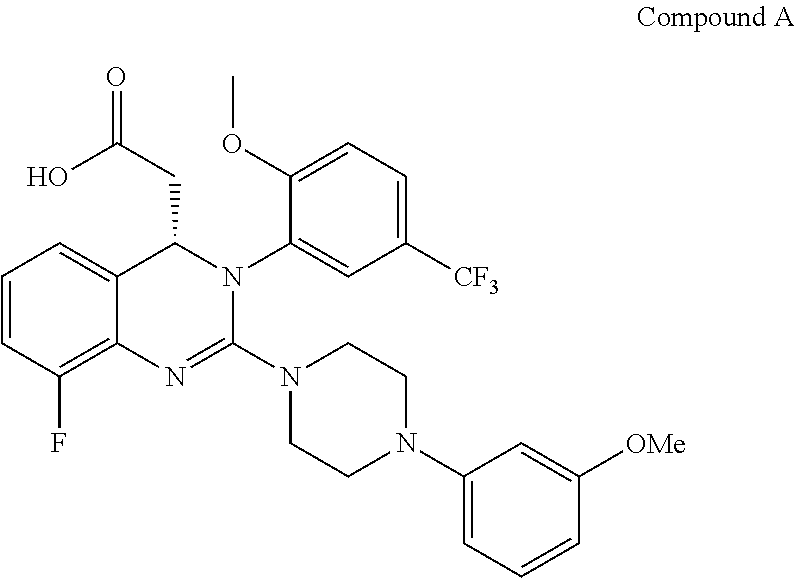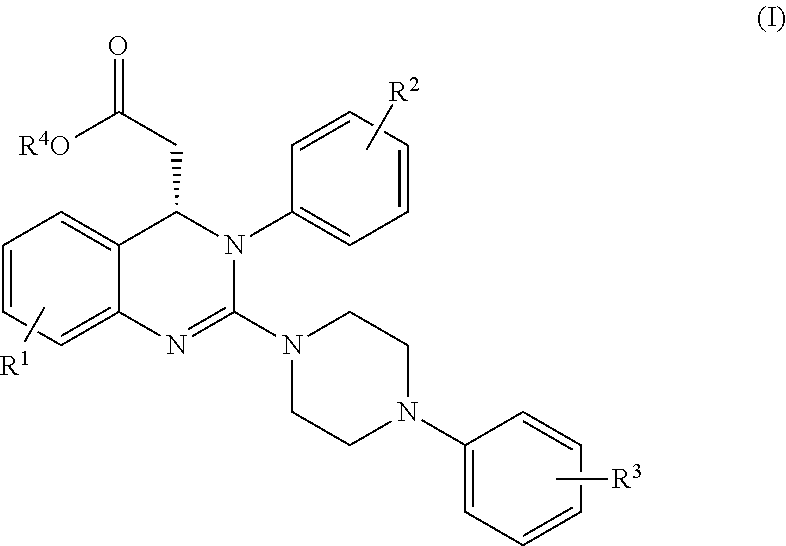Process for making substituted quinazoline compounds
a quinazoline compound and compound technology, applied in the field of process for making substituted quinazoline compounds, can solve the problems of high rate of life-threatening infections and the leading cause of birth defects of hcmv, and achieve the effect of treating and prophylaxis of hcmv infection
- Summary
- Abstract
- Description
- Claims
- Application Information
AI Technical Summary
Benefits of technology
Problems solved by technology
Method used
Image
Examples
example 1
Preparation of Intermediate Compound 2
[0086]
[0087]To a degassed solution of 2-bromo-6-fluoroaniline (1, 99.5 g, 0.524 mol), methyl acrylate (95.0 mL, 1.05 mol), Chloro[(tri-tert-butylphosphine)-2-(2-aminobiphenyl)] palladium(II) (0.537 g, 1.05 mmol) in isopropyl acetate (796 mL), was added degassed N,N-dicyclohexylmethylamine (135 mL, 0.628 mol). The resulting reaction was heated to 80° C. and allowed to stir at this temperature for 5 hours. The resulting slurry was cooled to 20° C. and filtered. The filtrate was washed with 1 M citric acid to provide a solution that contained compound 2 (99.3 g, 97% assay yield) in isopropyl acrylate, which was used without further purification. 1H NMR (500 MHz, d-CHCl3): δH 7.79 ppm (1H, d, J=15.9 Hz), 7.17 ppm (1H, d, J=8.2 Hz), 7.00 ppm (1H, ddd, J=10.7, 8.2, 1.2 Hz), 6.69 ppm (1H, td, J=8.2, 5.1 Hz), 6.38 ppm (1H, d, J=15.9 Hz), 4.06 ppm (2H, br s), 3.81 ppm (3H, s).
example 2
Preparation of Intermediate Compound 3
[0088]
[0089]To a solution of compound 2 (48.8 g, 0.250 mol) in 683 mL of isopropyl acetate was added 244 mL of water, followed by di-sodium hydrogen phosphate (53.2 g, 0.375 mol). To the resulting solution was added phenyl chloroformate (39.2 mL, 0.313 mol) dropwise over 30 minutes. The resulting reaction was heated to 30° C. and allowed to stir at this temperature for 5 hours for 4 hours and then was heated to 60° C. and allowed to stir at this temperature for 5 hours for an additional 2 hours to remove excess phenyl chloroformate. An additional 293 mL of isopropyl acetate was then added and the reaction mixture was allowed to stir at room temperature until the solids completely dissolved into solution. The resulting reaction mixture was transferred to a separatory funnel and the organic phase was washed with 98 mL of water and collected to provide a solution of compound 3 in isopropyl acetate, which was used without further purification. 1H NM...
example 3
Preparation of Intermediate Compound 4
[0090]
[0091]A solution of compound 3 (79.0 g, 0.250 mol), 2-methoxy-5-(trifluoromethyl)aniline (52.7 g, 0.276 mol), and 4-dimethylaminopyridine (0.92 g, 0.0075 mol) in isopropyl acetate (780 mL) was heated to reflux and allowed to stir at this temperature for 5 hours. The resulting slurry was cooled to 20° C., then allowed to stir at this temperature for for two hours at this temperature, then filtered. The collected filter cake was dried in vacuo to provide compound 5 (95.0 g, 0.230 mol) as a white solid, which was used without further purification. 1H NMR (500 MHz, d-TFA): δH 7.98 ppm (1H, d, J=16.1 Hz), 7.87 ppm (1H, s), 7.47 ppm (1H, d, J=7.9 Hz), 7.41 ppm (1H, d, J=8.5 Hz), 7.35 ppm (1H, q, J=8.5 Hz), 7.19 ppm (1H, t, J=8.6 Hz), 6.98 ppm (1H, d, J=8.6 Hz), 6.56 ppm (1H, d, J=16.0 Hz), 3.85 ppm (6H, br s).
PUM
| Property | Measurement | Unit |
|---|---|---|
| Temperature | aaaaa | aaaaa |
| Temperature | aaaaa | aaaaa |
| Temperature | aaaaa | aaaaa |
Abstract
Description
Claims
Application Information
 Login to View More
Login to View More - R&D
- Intellectual Property
- Life Sciences
- Materials
- Tech Scout
- Unparalleled Data Quality
- Higher Quality Content
- 60% Fewer Hallucinations
Browse by: Latest US Patents, China's latest patents, Technical Efficacy Thesaurus, Application Domain, Technology Topic, Popular Technical Reports.
© 2025 PatSnap. All rights reserved.Legal|Privacy policy|Modern Slavery Act Transparency Statement|Sitemap|About US| Contact US: help@patsnap.com



